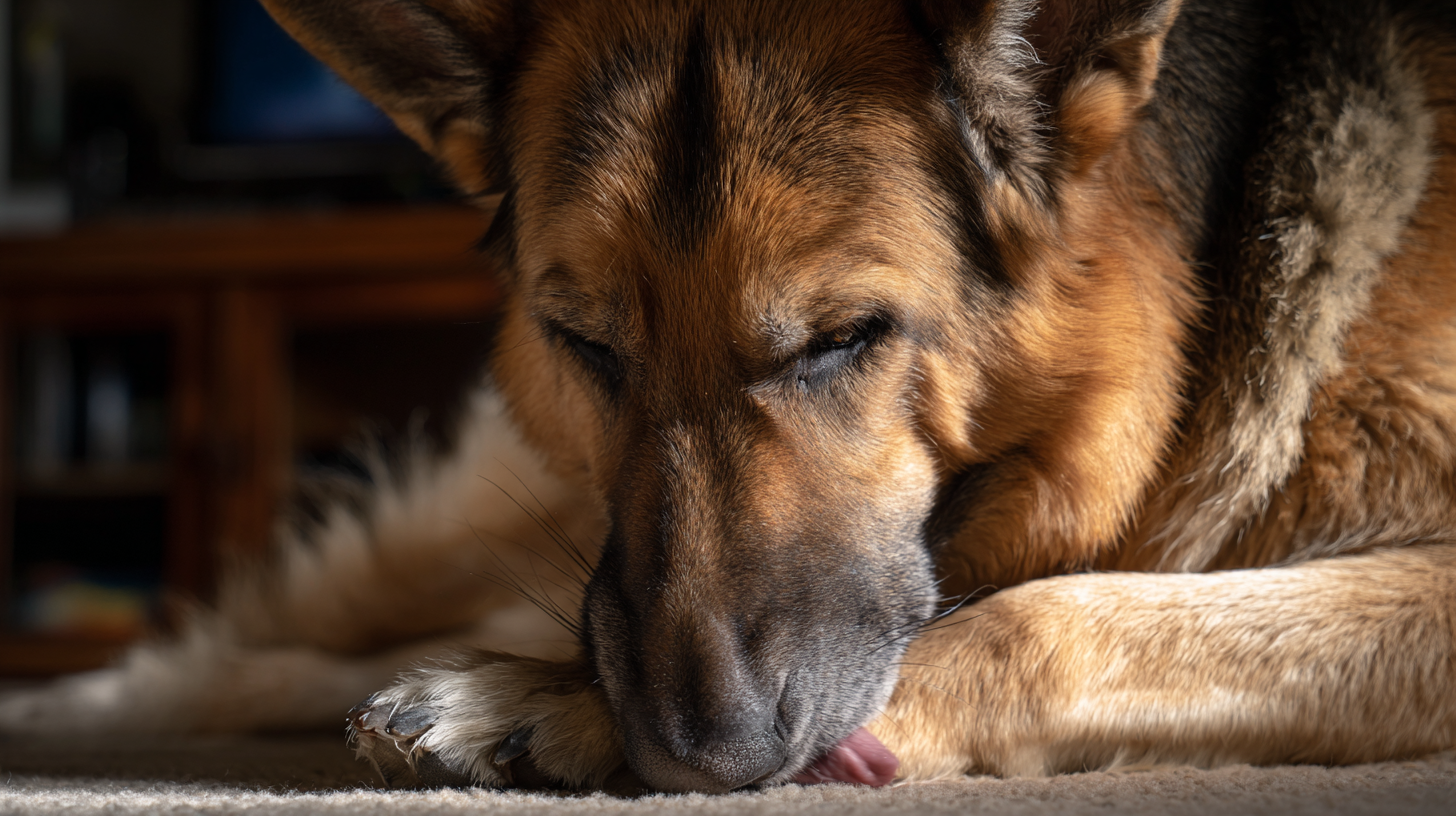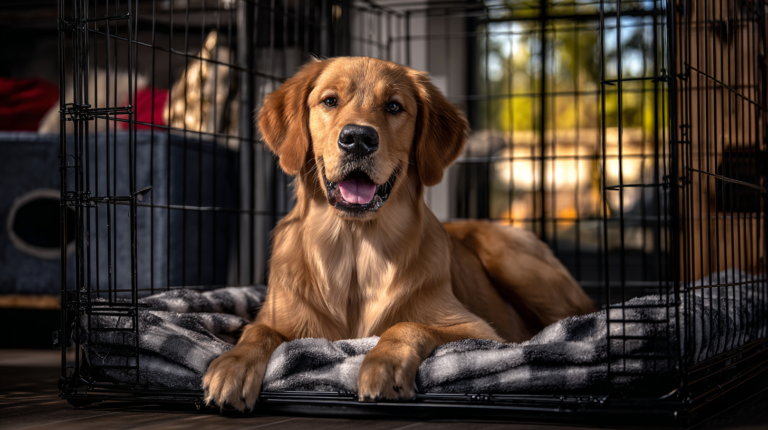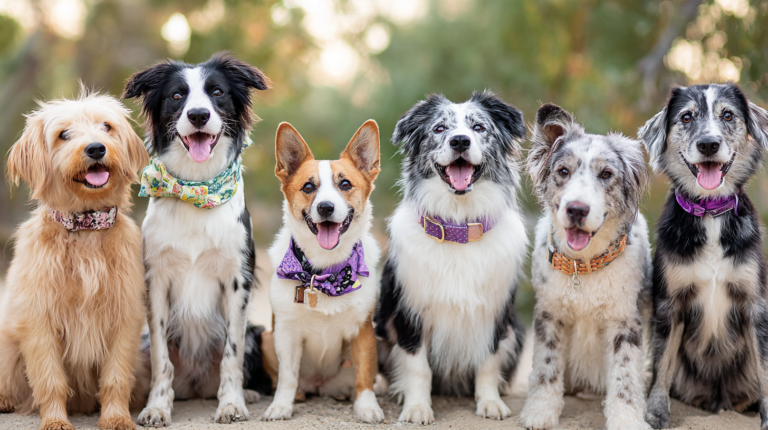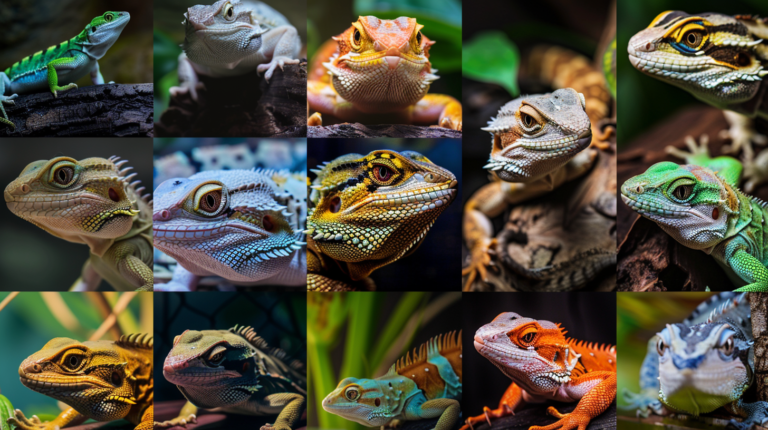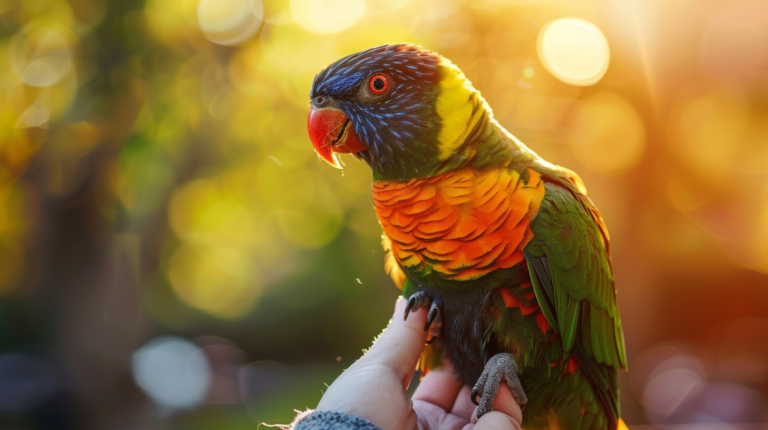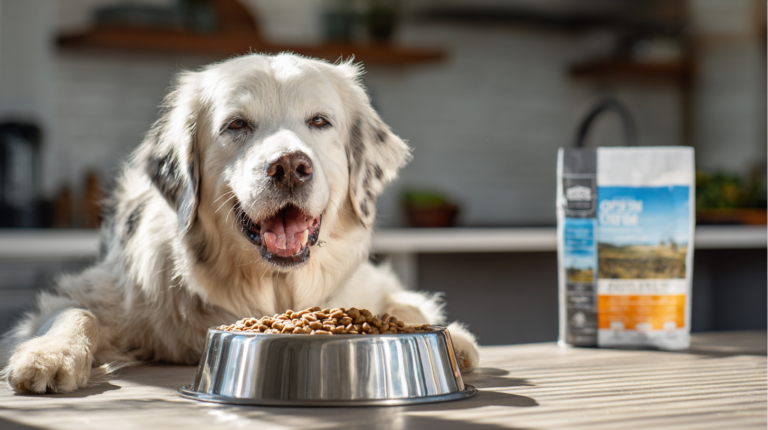Discover Why Do Dogs Lick Their Paws with 5 worrisome facts every pet owner should know. Expert veterinary advice, warning signs, and proven solutions.
Table of Contents
Did you know that 73% of dog owners report their pets engage in excessive paw licking at some point? If you’ve ever wondered why do dogs lick their paws so frequently, you’re not alone. This seemingly innocent behavior can actually signal serious underlying health issues that require immediate attention.
As a concerned pet parent, understanding the reasons behind your dog’s paw licking habits is crucial for maintaining their overall health and well-being. While occasional grooming is perfectly normal, persistent paw licking often indicates problems ranging from simple irritation to complex medical conditions that can significantly impact your furry friend’s quality of life.
In this comprehensive guide, we’ll explore the five most worrisome facts about canine paw licking behavior, helping you distinguish between normal grooming and concerning symptoms. You’ll discover actionable solutions, expert veterinary insights, and practical tips to keep your dog’s paws healthy and comfortable. Whether you’re a new pet owner or an experienced dog parent, this evidence-based information will empower you to make informed decisions about your dog’s health care.
Normal vs. Excessive Paw Licking: Understanding the Difference
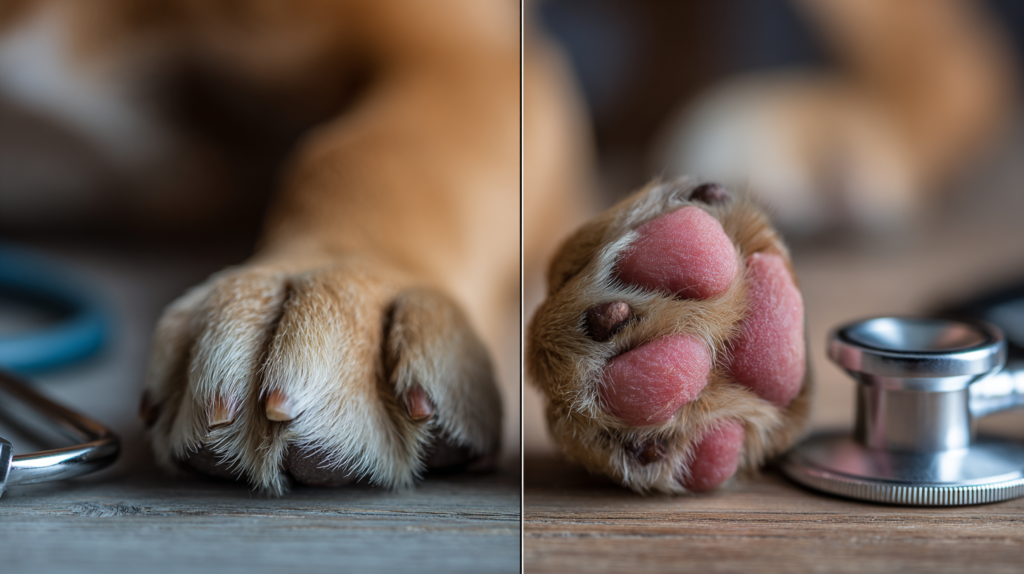
Before diving into the worrisome aspects of paw licking, it’s essential to understand what constitutes normal versus problematic behavior. Dogs naturally groom themselves, including their paws, as part of their daily routine. This instinctive behavior helps them maintain cleanliness and comfort.
Normal paw licking characteristics:
- Brief, occasional licking sessions lasting 30-60 seconds
- Gentle grooming typically occurring after walks or meals
- No visible signs of irritation or damage to the paw
- Behavior that doesn’t interfere with daily activities or sleep
Excessive paw licking warning signs:
- Continuous licking for extended periods (15+ minutes)
- Licking that creates visible wounds, redness, or swelling
- Behavior that disrupts sleep or normal activities
- Audible licking sounds throughout the day or night
- Development of dark staining on light-colored fur
Understanding these distinctions helps pet owners recognize when their dog’s grooming has crossed into problematic territory, requiring intervention and potentially veterinary care.
Allergic Reactions Can Cause Severe Discomfort
One of the most concerning reasons why dogs lick their paws excessively is allergic reactions. Environmental allergens, food sensitivities, and contact allergies can trigger intense itching and discomfort, leading to compulsive licking behaviors that can worsen the underlying condition.
Environmental Allergens and Seasonal Triggers
Environmental allergens represent the most common cause of allergic paw licking in dogs. Pollen, dust mites, mold spores, and grass can accumulate on your dog’s paws during outdoor activities, triggering inflammatory responses that create persistent itching.
Common environmental triggers include:
- Seasonal pollens from trees, grasses, and weeds
- Household dust and dust mites
- Cleaning products and chemicals
- Fertilizers and pesticides used on lawns
- Salt and ice-melting chemicals during winter months
Dogs with environmental allergies often exhibit seasonal patterns, with symptoms intensifying during spring and fall when pollen counts are highest. However, indoor allergens can cause year-round symptoms, making identification more challenging.
Food Allergies and Dietary Sensitivities
Food allergies can also manifest as paw licking, though this is less common than environmental allergies. Common food allergens for dogs include beef, chicken, dairy, wheat, and soy. Unlike environmental allergies, food-related paw licking typically occurs year-round and may be accompanied by digestive symptoms.
Signs of food-related paw licking:
- Consistent licking regardless of season
- Concurrent digestive issues like diarrhea or vomiting
- Skin irritation in multiple body areas
- Improvement when specific foods are eliminated from the diet
Contact Allergies and Chemical Sensitivities
Contact allergies occur when your dog’s paws come into direct contact with irritating substances. New carpets, cleaning products, lawn treatments, or even certain types of bedding can trigger allergic reactions that manifest as excessive paw licking.
For more expert pet care tips and product recommendations, visit BlithePet.com — your trusted source for pet wellness.
Bacterial and Fungal Infections Can Become Serious
Infections represent another alarming reason behind excessive paw licking. Bacteria and fungi thrive in warm, moist environments, making dogs’ paws particularly susceptible to infection, especially when compromised by allergies or injuries.
Bacterial Infections: More Than Surface Deep
Bacterial infections in dogs’ paws can range from superficial skin irritation to deep tissue infections that require aggressive treatment. Staphylococcus and Streptococcus bacteria are common culprits, often secondary to allergic reactions or minor injuries.
Warning signs of bacterial infections:
- Foul odor emanating from the paws
- Visible pus or discharge between toes
- Swelling and heat in the affected area
- Red, inflamed skin with possible ulceration
- Reluctance to walk or bear weight on affected paws
Untreated bacterial infections can spread to deeper tissues, potentially causing cellulitis or even bone infections that may require surgical intervention.
Fungal Infections: The Hidden Threat
Fungal infections, particularly yeast infections caused by Malassezia species, are increasingly common in dogs with compromised immune systems or underlying allergies. These organisms naturally exist on dogs’ skin but can overgrow when conditions are favorable.
Yeast infection indicators:
- Sweet, musty odor from the paws
- Brown or black discharge between toes
- Thick, waxy buildup on paw pads
- Intense itching leading to constant licking
- Darkened skin pigmentation in affected areas
Fungal infections often create a cycle where licking provides temporary relief but increases moisture, creating ideal conditions for continued fungal growth.
Secondary Infections from Excessive Licking
Perhaps most concerning is how excessive licking can create secondary infections. The constant moisture and trauma from licking breaks down the skin’s natural protective barrier, allowing opportunistic bacteria and fungi to establish infections.
Research indicates that dogs who lick their paws excessively are 300% more likely to develop secondary infections compared to those with normal grooming habits. This statistic underscores the importance of addressing paw licking early before it progresses to more serious complications.
Parasites and Foreign Objects Cause Hidden Damage
External parasites and foreign objects lodged in paws represent often-overlooked causes of excessive licking that can lead to serious complications if not promptly addressed.
Parasitic Infestations: Small Invaders, Big Problems
Fleas, ticks, and mites can take up residence in the spaces between your dog’s toes, causing intense irritation and compulsive licking. These parasites are particularly problematic because they can be difficult to detect during routine grooming.
Common paw parasites include:
- Fleas: Often concentrate in warm, protected areas like toe spaces
- Ticks: Can attach between toes and on paw pads
- Sarcoptic mites: Cause intense itching and scabbing
- Demodex mites: Lead to hair loss and skin thickening
Parasitic infestations require specific treatments and can quickly spread to other pets in the household if not properly managed.
Foreign Objects: More Common Than You Think
Veterinary emergency clinics report that foreign objects in paws account for nearly 15% of urgent care visits. These objects can range from obvious splinters to nearly invisible grass seeds that work their way deep into paw tissue.
Common foreign objects include:
- Grass seeds and foxtails
- Thorns and splinters
- Small stones and gravel
- Pieces of glass or metal
- Ice balls and snow accumulation
Case Study: A 3-year-old Golden Retriever named Max developed sudden, intense paw licking after a hike. His owner initially attributed it to allergies, but veterinary examination revealed a small foxtail that had penetrated between his toes and was working its way deeper into the tissue. Surgical removal was required to prevent serious infection.
The Migration Risk
Some foreign objects, particularly grass seeds, can migrate through tissue if not removed promptly. This migration can cause abscesses, nerve damage, or even systemic infection if the object reaches vital organs.
Psychological Factors Create Compulsive Behaviors
Mental health issues in dogs can manifest as compulsive paw licking, creating a challenging cycle that’s difficult to break without addressing the underlying psychological causes.
Anxiety and Stress-Related Licking
Dogs experiencing anxiety or stress often develop repetitive behaviors, including excessive paw licking. This behavior can become self-soothing but ultimately destructive, leading to physical damage that perpetuates the cycle.
Common anxiety triggers include:
- Separation anxiety when left alone
- Changes in household routine or environment
- Introduction of new pets or family members
- Loud noises like thunderstorms or fireworks
- Medical procedures or veterinary visits
Obsessive-Compulsive Disorder in Dogs
Canine compulsive disorder (CCD) is a recognized condition where dogs engage in repetitive behaviors that serve no apparent function. Paw licking is one of the most common manifestations, often developing in response to stress but continuing even after the stressor is removed.
Characteristics of compulsive paw licking:
- Behavior continues despite physical discomfort
- Licking occurs for hours without interruption
- Difficulty redirecting the dog’s attention
- Behavior intensifies during stressful periods
- Physical damage that doesn’t deter continued licking
Boredom and Lack of Mental Stimulation
Insufficient mental and physical stimulation can lead to destructive behaviors, including excessive paw licking. Dogs require regular exercise and mental challenges to maintain psychological well-being.
Signs of boredom-related paw licking:
- Behavior primarily occurs during inactive periods
- Improvement with increased exercise and mental stimulation
- Concurrent destructive behaviors like chewing or digging
- Responsiveness to redirection and training
Underlying Medical Conditions May Be Present
Perhaps the most concerning aspect of excessive paw licking is that it can indicate serious underlying medical conditions that require immediate veterinary attention.
Autoimmune Disorders
Autoimmune conditions like pemphigus or lupus can cause painful lesions on paw pads that trigger excessive licking. These conditions require aggressive treatment and ongoing management to prevent serious complications.
Autoimmune disorder warning signs:
- Painful ulcers or blisters on paw pads
- Symmetrical lesions affecting multiple paws
- Concurrent symptoms like fever or lethargy
- Poor response to standard treatments
- Progressive worsening of symptoms
Hormonal Imbalances
Endocrine disorders such as hypothyroidism or Cushing’s disease can cause skin problems that lead to excessive paw licking. These conditions affect the skin’s integrity and immune function, making dogs more susceptible to infections and allergic reactions.
Arthritis and Joint Pain
Older dogs may lick their paws excessively due to arthritis or joint pain. This behavior represents an attempt to self-soothe painful joints, but it can mask serious mobility issues that require medical intervention.
Joint-related paw licking indicators:
- Behavior primarily affects weight-bearing paws
- Increased licking after exercise or activity
- Stiffness or difficulty rising from rest
- Reluctance to jump or climb stairs
- Concurrent signs of pain or discomfort
Expert Tips for Managing Paw Licking
Based on veterinary recommendations and behavioral research, here are ten actionable strategies for managing excessive paw licking:
- Implement Daily Paw Inspections: Examine your dog’s paws daily for signs of irritation, foreign objects, or infection. Early detection prevents minor issues from becoming major problems.
- Maintain Proper Paw Hygiene: Clean your dog’s paws with a gentle, pet-safe cleanser after walks, especially in areas with potential allergens or irritants.
- Use Protective Barriers: Consider booties or paw balms to protect sensitive paws from environmental irritants during walks.
- Manage Environmental Allergens: Regular vacuuming, air purifiers, and limiting exposure during high-pollen days can reduce allergic reactions.
- Provide Mental Stimulation: Puzzle toys, training sessions, and interactive games help address boredom-related licking behaviors.
- Establish Consistent Routines: Predictable schedules reduce anxiety-related behaviors in sensitive dogs.
- Monitor Diet and Nutrition: Work with your veterinarian to identify potential food allergens through elimination diets if necessary.
- Address Stress Factors: Identify and minimize environmental stressors that might trigger compulsive behaviors.
- Use Positive Distraction: Redirect licking behaviors to appropriate activities like chew toys or training exercises.
- Document Patterns: Keep a log of when licking occurs, potential triggers, and environmental factors to help identify underlying causes.
Red Flags: When to Seek Immediate Veterinary Care
Certain symptoms require immediate professional attention and should never be ignored:
- Open wounds or ulcers on paw pads or between toes
- Swelling that extends beyond the immediate paw area
- Limping or inability to bear weight on affected paws
- Foul odor or discharge indicating possible infection
- Behavioral changes like aggression when paws are touched
- Systemic symptoms such as fever, lethargy, or loss of appetite
- Rapid worsening of symptoms despite home treatment attempts
Common Mistakes Pet Owners Make
Avoid these frequent errors that can worsen paw licking problems:
Using Human Products: Never use human medications, ointments, or cleaning products on your dog’s paws. These can be toxic and may worsen the condition.
Ignoring Early Signs: Dismissing initial symptoms as “just grooming” can allow minor issues to develop into serious problems requiring extensive treatment.
Inconsistent Treatment: Starting and stopping treatments prematurely prevents proper healing and can lead to resistance or recurring problems.
Self-Diagnosing: While it’s important to be observant, attempting to diagnose the underlying cause without professional help can delay appropriate treatment.
Punishment-Based Approaches: Scolding or punishing paw licking behaviors can increase anxiety and worsen the underlying problem.
Step-by-Step Paw Examination Guide
Regular paw examinations are crucial for early detection of problems. Follow this systematic approach:
Step 1: Prepare Your Dog
- Choose a quiet, comfortable location
- Have treats available for positive reinforcement
- Ensure your dog is calm and relaxed
Step 2: Visual Inspection
- Look for obvious signs of swelling, redness, or discharge
- Check for foreign objects or unusual growths
- Examine the spaces between toes carefully
Step 3: Gentle Palpation
- Press gently on each paw pad to check for tenderness
- Feel between toes for swelling or foreign objects
- Note any areas where your dog shows discomfort
Step 4: Nail and Pad Assessment
- Examine nail length and condition
- Check paw pads for cuts, cracks, or unusual texture
- Look for signs of infection around nail beds
Step 5: Documentation
- Note any abnormalities or changes from previous examinations
- Take photos if necessary for veterinary consultation
- Record your findings with dates for tracking
Myth-Busting: Common Misconceptions About Paw Licking
Myth 1: “Dogs lick their paws when they’re bored” Reality: While boredom can contribute to paw licking, it’s often a sign of underlying medical issues that require attention.
Myth 2: “Paw licking is just normal grooming” Reality: Excessive or persistent paw licking is never normal and usually indicates a problem requiring intervention.
Myth 3: “Home remedies always work for paw problems” Reality: While some home treatments can help, many paw issues require professional veterinary care for proper diagnosis and treatment.
Educational Table
Markdown Version:
FAQ Section :
Q: Why do dogs lick their paws excessively?
A: Dogs lick their paws excessively due to various reasons including allergic reactions, bacterial or fungal infections, parasites, foreign objects, psychological factors like anxiety, or underlying medical conditions. Normal grooming is brief and occasional, while excessive licking lasts for extended periods and may cause visible damage.
Q: How can I tell if my dog’s paw licking is normal or concerning?
A: Normal paw licking is brief (30-60 seconds), occasional, and doesn’t cause visible damage. Concerning signs include continuous licking for 15+ minutes, visible wounds or redness, behavior that disrupts sleep, audible licking throughout the day, or dark staining on light-colored fur.
Q: What should I do if my dog won’t stop licking their paws?
A: First, examine the paws for obvious issues like foreign objects or injuries. If no obvious cause is found, or if symptoms persist beyond 24-48 hours, consult your veterinarian. Document when the licking occurs and any potential triggers to help with diagnosis.
Q: Can I use home remedies for my dog’s paw licking?
A: While some mild cases may benefit from gentle cleaning with pet-safe products, many paw issues require professional veterinary care. Never use human medications or products on your dog’s paws, as these can be toxic and may worsen the condition.
Q: How long does it take to resolve paw licking problems?
A: Treatment duration depends on the underlying cause. Allergic reactions may improve within days to weeks with proper management, while infections typically require 1-2 weeks of treatment. Behavioral issues may take several weeks to months to resolve with consistent intervention.
Q: Are certain dog breeds more prone to paw licking?
A: Yes, breeds with allergies like Golden Retrievers, Bulldogs, and Poodles are more susceptible to paw licking. Breeds with hair between their toes, such as Cocker Spaniels and Poodles, may also be more prone to foreign object entrapment and subsequent licking.
Q: When should I seek emergency veterinary care for paw licking?
A: Seek immediate care if you notice open wounds, significant swelling, inability to bear weight, foul odor or discharge, signs of systemic illness like fever or lethargy, or if your dog shows aggression when paws are touched. These symptoms indicate serious conditions requiring urgent treatment.
Conclusion:
Understanding why dogs lick their paws is crucial for maintaining your pet’s health and preventing serious complications. The five worrisome facts we’ve explored – allergic reactions, infections, parasites and foreign objects, psychological factors, and underlying medical conditions – highlight the importance of taking this behavior seriously.
Remember that early intervention is key to successful treatment. Regular paw examinations, proper hygiene, and prompt veterinary care when concerning symptoms arise can prevent minor issues from becoming major health problems. By staying vigilant and informed, you can ensure your furry friend maintains healthy, comfortable paws throughout their life.
The most important takeaway is that persistent paw licking is never “just grooming” – it’s your dog’s way of communicating that something is wrong. Trust your instincts as a pet owner, and don’t hesitate to seek professional help when needed.
Have a similar experience with your pet? Share it in the comments below! Don’t forget to check out our other helpful guides at BlithePet.com for more expert advice on keeping your dog healthy and happy.

